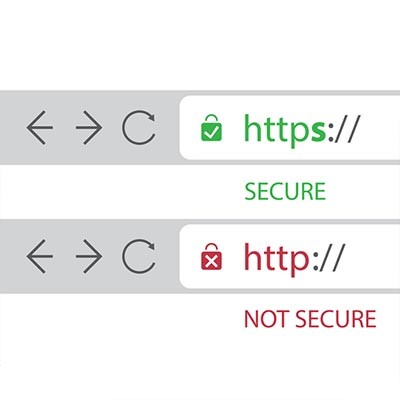PCSOFT Blog
Tip of the Week: How to Secure Your Internet Browser
Most people today spend a lot of time on the Internet, which means that most people spend a lot of time using a browser. Little do they know, selecting the wrong one could easily put their cybersecurity at risk, along with dozens of other actions. For this week’s tip, we’ll go over how to make your Internet browser as secure as possible.
Update (And Turn on Notifications)
We can safely say that the more up-to-date a browser is, the more secure it is going to be. This is because many of the changes that these updates address have to do with the browser’s security features, including any anti-phishing, anti-malware, and plugin security measures. You should also turn on your browser’s auto-update function, which will let you know whenever an updated version is available.
Customize Your Security Settings
Or, in other words, set them to be as high as possible. Here are some suggestions:
Cookies - Disable them, or only enable them if you trust the website and they are required.
Pop-Up Windows - Block them from opening automatically, only enable them for trusted websites, or have the browser ask for confirmation
Block Reported Attack/Fake Sites - If it is available, block malicious sites by enabling this feature
Camera and Microphone Usage - Block from running automatically, and have the browser ask for confirmation
Javascript - Block from running automatically, only enable it for trusted websites, and have the browser ask for confirmation
Plugins and Add-Ons - Block from running automatically, or have the browser ask for confirmation
Leverage Antivirus
Is antivirus perfect? No. Is it better to use it? Absolutely. An up-to-date antivirus solution can provide quite the strong defense against most malicious code, and their threat definitions can be updated automatically, meaning that it would only get better and more effective over time. For your company, your antivirus should be centrally managed, not installed on each individual device.
Use a Limited Account
Instead of using your administrator account for your daily use, consider creating a secondary one with limited privileges to use instead. Many threats leverage the access of the user in order to deliver whatever payload they have, so the less access the user has, the better. An administrator account is really only necessary when you’re making changes to the device, so limiting its use won’t be an inconvenience.
Browser Compartmentalization
There are many different options out there for web browsing - far more than just the likes of Chrome, Edge, and Safari. There is also nothing to restrict you to only using one, which is why another means of improving your security exists: browser compartmentalization.
Basically, browser compartmentalization is to use multiple browsers, assigning certain activities to each. Any online accounts will only be accessed via Browser A, while Browser B would be reserved for browsing (with its history and cookies disabled). As long as you stick to the rules, browser compartmentalization can be an effective way of making your browsing more secure.
Try a Browser Made for Security
Speaking of web browsing options, many browsers are designed with their security as the top priority. There’s Firefox, for instance, which can be customized to be security-centric, as well as a few open-source versions, like GNU IceCat, Waterfox, and Pale Moon. If you’re more used to Google Chrome, there are secure browsers based on Chromium, the code base behind Chrome. These include Iridium Browser, Ungoogled Chromium, and Brave.
Use a VPN
A VPN (short for Virtual Private Network) takes your Internet activity and conceals it behind encryption, boosting your security considerably. There are many VPN services out there, so you will want to lean on a trusted resource like PCSOFT to help you select and implement one that best fits your needs.
PCSOFT can help you improve your business’ security and productivity with reliable IT solutions. To learn more about what we can do, reach out to us at 02 98730080.


Comments